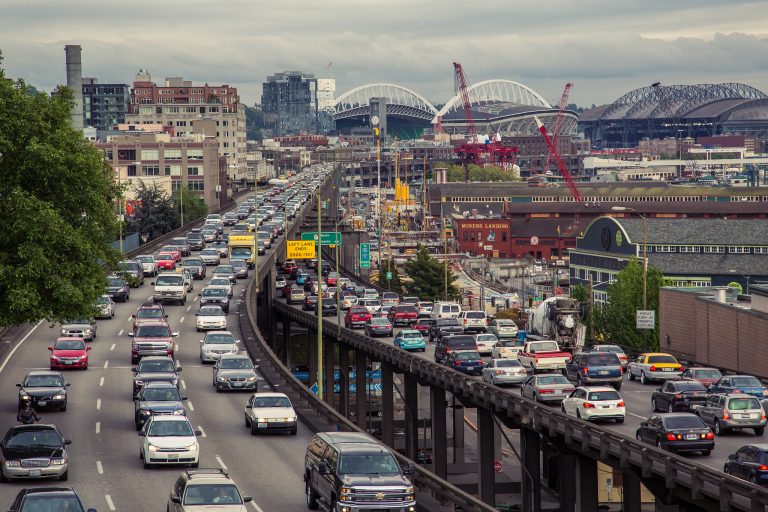Published on April 26, 2021

What does a city sound like? Asked that question, do you think of the dull roar of traffic, the staccato yelp of a horn, the wobbling screech of an alarm? In other words, do you think of cars? Automobiles are such a fixture of the urban landscape that it’s easy to overlook just how much they dominate the soundscape, too.
But that changed when the coronavirus pandemic arrived a year ago. As workplaces went virtual and shopping shifted online, traffic largely vanished. The relative quietude delighted many urban residents—and not just humans. A study of Bay Area sparrows found that their birdsongs grew richer as the automotive din subsided.
That tranquility proved to be fleeting. (And you might have missed it, spiked as that early-pandemic moment was with uncertainty and fear.) Traffic has made a steady recovery as far back as last summer, and it is poised to grow further as workplaces reopen. Even after a tough year, the acoustic part of the early lockdown is one aspect of the pandemic we should remember warmly: Our neighborhoods weren’t just more enjoyable without cars constantly rumbling by. The reduced noise made them healthier, too.
Although no one likes being startled awake by a blaring car horn, auditory intrusions also come from a variety of other urban sources, such as helicopters, firetrucks, and jackhammers. But helicopters eventually fly away, firetrucks pass, and construction crews go home. Meanwhile traffic’s cacophony is endless if you live along a major thoroughfare. No other urban sound can be so unrelenting. And while there isn’t much we can do about the annoyance of a siren—it’s loud for a reason—there are a number of tools available to reduce the clamor of cars.
Prolonged exposure to noise is deeply harmful to human health. A study of London residents found that those subjected to sustained, high levels of traffic noise were more likely to die, especially from strokes, and another from Sweden found increased risk of heart attacks. According to the World Health Organization, excessive noise can “cause cardiovascular and psychophysiological effects, reduce performance and provoke annoyance responses and changes in social behavior.”
Although people may not fully appreciate the health risks, most still try to avoid living near busy roads. “Noise is a part of the lack of quality of life in these environments, though the health impact is not directly tangible” says Anne Moudon, a professor emerita at the University of Washington’s department of urban design and planning. Low-income, minority communities have a disproportionate share of major thoroughfares, making the decisions to route so many urban interstates through them during the 1950s and 1960s seem even more inequitable.
Continue reading at Slate.
Originally written by David Zipper for Slate.